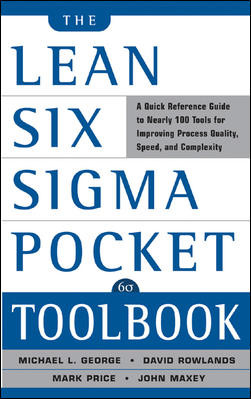Leading Lean: One Heart at a Time
In discussing lean with people at companies all over the world, I'm frequently asked, "How do I convince my boss, my peers, our suppliers, our union, my wife?" The last one I can't help you with, but the rest I can. The prerequisite to success in this challenge is to realize that ultimately each person makes up his or her own mind. You don't convince an organization. You convince the people within that organization. Each of us who is committed to a lean journey was not born that way. Even if the leap was easy for you and seemed natural, you still had to learn somehow.
We have many tools for creating change including training, books, lean events and coaching. But we vastly underutilize informal means. One powerful method is the elevator pitch, a 90-second spiel made popular by entrepreneurs trying to sell their companies to venture capital firms. If you can sell an idea to someone held captive in an elevator, you're positioned to take the next step.
If we want commitment, buy-in or even just an audience, we have to sell the people in an organization on lean. Selling is convincing someone that what you have to offer has value. We believe lean is good, and it is our job to convince others that lean offers them something of value. I recommend that you actually plan and write down an elevator pitch or two. Then seize opportunities-walking in from the parking lot, in the hallway, or waiting for a meeting to start-to use it. The majority of our communication in business is informal, but it should be used purposefully. You can still talk football, but realize that the informal conversations you have throughout the day offer you a great opportunity to convince people about the value of lean. Let's not waste them.
In structuring your elevator speech for lean, keep it simple and avoid cramming too much into a 90-second pitch. I recommend three elements. The first element is WHY. Why lean? You must have a compelling reason that suits the person and situation. The most powerful arguments have an emotional element, not just a rational business one. For example, "Wouldn't you like to leave at 5 p.m. confident that everything is OK?" has both rational and emotional appeal.
The second element is WHAT. What is lean? Don't try to educate, just inform. The most effective approach is to present a tangible image of what will be different than it is today. The third element is DO. This is the call to action; you are asking this person to do something. This might be a request for specific individual action, or just a reminder that "everyone has a role" and that real commitment is essential to lean success.
Here's how to make your elevator pitch effective. First, understand that every person is different. It's good to have a standard speech to start with, but be prepared to deviate from your standard based on your knowledge of a person. Second, be genuine and sincere. Yes, it's a sales pitch, but don't make it sound that way. Third, be passionate. If you believe in something strongly, then demonstrate your commitment. Fourth, don't educate. This is not about jargon or definitions; you are trying to convince the other person that lean has real value. And finally, make it personal. One-on-one communication is personal; don't lose the connection you have with someone by making this a corporate pitch.
It is imperative that people be committed to lean before we start a lean journey. This means we have to sell, but remember that each individual must be sold. A lean organization is built one heart and one mind at a time.
Jamie Flinchbaugh is a founder and partner of the Lean Learning Center in Novi, MI, and the co-author of The Hitchhiker's Guide to Lean: Lessons from the Road. He shares his successful and varied experiences of lean transformation as a practitioner and leader through companies such as Chrysler and DTE Energy. He also has a wide range of practical experience in industrial operations, including production, maintenance, material control, product development and manufacturing engineering. Jamie is a graduate fellow of the Leaders for Manufacturing Program at the Massachusetts Institute of Technology, where his research thesis was on implementing lean manufacturing through factory design. He also holds a B.S. in Engineering from Lehigh University in Bethlehem, PA, and an M.S. in Engineering from the University of Michigan. To contact Jamie directly, go to the web site www.leanlearningcenter.com.
Looking for a reprint of this article?
From high-res PDFs to custom plaques, order your copy today!





